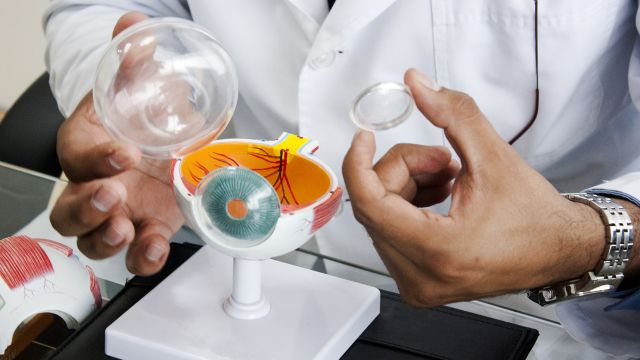Updated on July 1, 2025
Age-related macular degeneration (AMD) is a leading cause of severe vision loss for older adults in the United States and many other places in the world.
The type of vision loss that occurs with AMD is called central vision loss.
People experiencing this type of vision loss will have a blurred area at the center of their vision. This can make it difficult to read, drive, and perform tasks that require them to discern detail in what they are looking at.
While AMD does not cause complete blindness, symptoms typically worsen with time, and vision can become severely impaired. This can result in legal blindness.
To understand AMD, it helps to understand two specific parts of the eye—the retina and the macula.
Retina and macula
The retina is a thin layer of tissues located at the back of the eye, near the optic nerve. Light that is focused by the lens of the eye is directed at the retina. It converts that light into neural signals, which are then sent to the brain.
The macula is the most sensitive part of the retina, located at the center, made up of millions of light-sensitive cells. As a person ages, deposits of waste materials—called drusen—can accumulate on the retina and supporting tissues. As a result, the cells of the retina and macula can become damaged.
In the early stage of AMD, only very small drusen are present, the damage is minimal, and no vision loss occurs.
People with intermediate AMD have larger drusen, but most will not have noticeable symptoms.
When vision loss begins to occur, it is considered late AMD. There are two types of late AMD. One is called dry AMD, and the other called wet AMD.
Dry AMD and wet AMD
Dry age-related macular degeneration is the more common of the two types. It accounts for roughly 80 to 90 percent of cases.
With dry AMD, vision loss occurs as a result of the macular damage described in the paragraphs above—large drusen and a breakdown of cells. It typically affects both eyes at the same time.
Wet age-related macular degeneration is the less common of the two types, occurring in 10 to 20 percent of cases. In most cases, wet AMD begins as dry AMD.
With wet AMD, abnormal blood vessels form beneath the retina. These blood vessels can leak blood and fluid into the eye, which damages the cells of the retina. They can also scar, causing permanent vision loss.
The progression of vision loss is often much quicker with wet AMD, occurring over days or weeks. Wet AMD can affect both eyes, but it is more common to have wet AMD in one eye.
Taking care of your eyes
Regular eye exams can identify AMD early, so see an eye doctor regularly. To lower your risk of the condition, it's important to stop smoking (if you smoke), eat a well-balanced diet with plenty of leafy greens, and maintain healthy blood pressure and cholesterol levels. You may also want to ask a healthcare provider about supplements that may support the health of your eyes.
If you or a loved one has symptoms of AMD, it is crucial to work with an eye doctor who can assess what is causing the vision loss, explain the treatment options available, and refer you to specialists that can help you learn ways of coping with vision loss.





